I've not watched television for two weeks.
At night, I've gone to bed having lit my little wood burner, to a chorus of owls and the rich light of the full moon over Dartmoor.
The piece I'm intending to write about my week in the woods, getting to know the deer on all levels hasn't found its form yet. Instead I've been thinking about the time I spent with my Cornish friends, having emerged from the wilds of Dartmoor. Consider this an interlude, the equivalent of the 1950’s BBC television classics.
In Exeter the charming Royal Albert Museum has a space to leave luggage whilst perusing the thoughtful collection. The staff, from the people greeting you as you enter, to the enthusiastic man in the shop are delightful and helpful to a tee. When I collected my bags the woman who unlocked the cupboard for me said, can you smell smoked bacon? I showed her the coat I'd been wearing all week around an outdoor fire. ‘I think you'll find it's me’ I said. She was mortified. I laughed. Even after a spell in the washing machine my coat still has a faint taint of wood-smoke.
I was thrilled to have a weeks buffer before emerging into the hard London landscape of Paddington Station, everyone heads down, busy, busy. And glad for my deer medicine.
The hedgerows around Ludgvan were full of Alexanders, bluebells, both native and Spanish, Campion, hogweed and three cornered leek.
My friends property overlooks a late flowering daffodil field which in turn is almost overshadowed by a magnificent view of St Michael's Mount. Walking through the apple orchard, blossom just beginning to show, a carpet of Forget-Me-Nots were a blaze of bright cobalt blue. Picking an armful of daffodils in the rain, I have a greater appreciation for the hordes of flower pickers who have to only pick flowers with tight buds, form bunches and put elastic bands on them top and bottom, bending down, constantly.
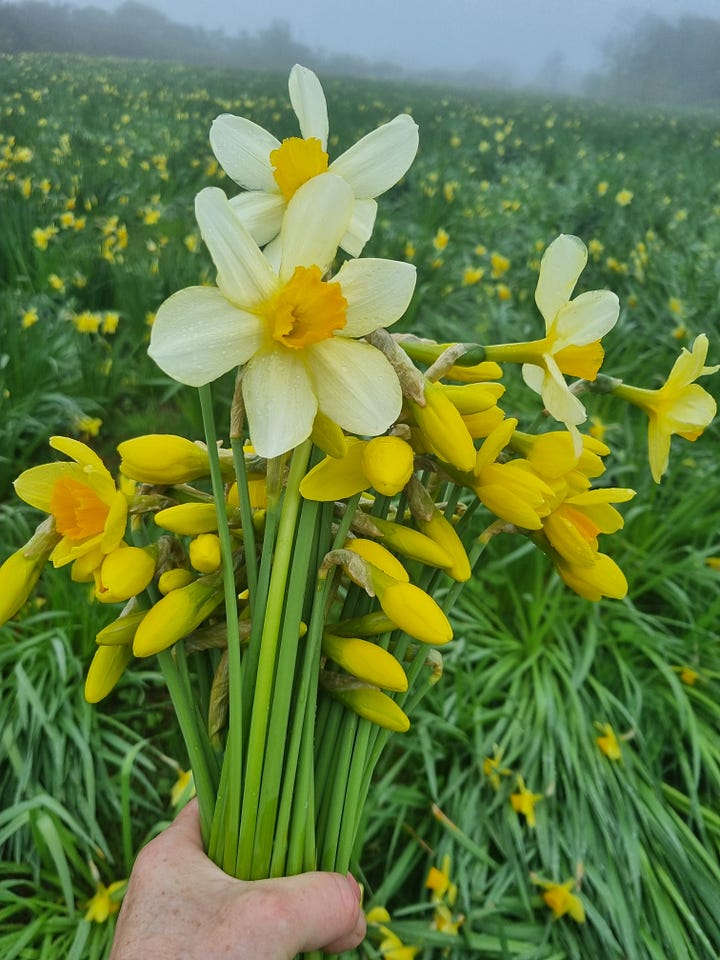
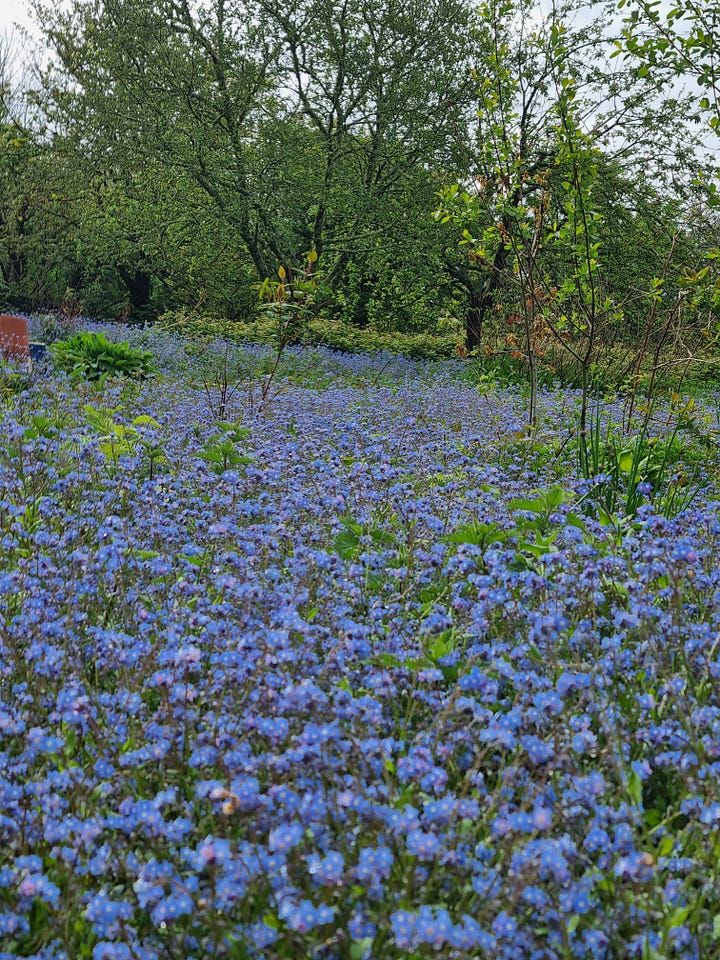
The idea of Spring is often different in reality. With the sunshine, how long can we dare to wear sunglasses, show flesh and relax before the rain clouds appear again? In our wood on Dartmoor, we had twenty-four hours of non stop heavy rain, thunder and lightening, the sound of the water bouncing off the tarp where the firewood stays dry, and running in rivulets around the fire pit like tiny rivers.
Our cravings leapt overnight like a barometer on overdrive from salads to stews. On my last evening in Cornwall, I made
curried cauliflower, leek and pea pie which was hearty, delicious, warming and just what we wanted.There was field grown rhubarb in the greengrocers but no asparagus. On the day I left, they had a box of Italian peas, broad beans and bunches of English asparagus.
Both of the leaders of the Dartmoor course were on the wild food only Wildbiome Project 2. I came across Lucy gathering hawthorne blossom and without thinking, asked if April was a difficult month for finding ingredients. I’d been considering the hungry gap but for wild, not cultivated foods, there are so many more foods in season in the spring. Not at all she answered, there’s so much to find.
Their menu was obviously different to ours, with delicious looking ingredients including sea spaghetti, hogweed shoots and fried burdock.
Last year I wrote about the numerous Italian-American primavera recipes that include peas, asparagus, broad beans and more ingredients that haven’t yet broken ground in the UK.
I’m currently reading ‘Our Hidden Lives’, the remarkable diaries of post-war Britain. Real stories shared by a cross section of people show how difficult it was to find ingredients. It wasn’t until 17th June 1945, that Maggie Blunt reports:-
‘Peas are in but there is little else as a vegetable except cabbage…There are now no food reserves in the country and supplies are going to Europe.’
On our community growing space we’re harvesting cime di rapa, last years leeks that refused to grow over winter, turnip tops, kalette shoots, leaving plenty for the bees, radicchio that is beginning to bolt, giant collard leaves and purple sprouting broccoli. Here’s the collard greens so you can see how large it’s grown;
The potatoes have just broken the surface of the soil, and cucumbers, aubergines, beans, tomatoes, beetroot, sweetcorn and summer and winter squash are being moved to bigger pots. We've given up growing peas but they'd not be harvested until June and our broad beans are at least a month away from readiness. The currant bushes are loaded with berries at the beginning of their journey. Pears and gooseberries are setting. Apple blossom is a hopeful reminder of the months of pruning and a fervent wish that we have no frosts in May.
Once the purple sprouting finishes, which will be soon as it's trying its best to burst into flower, we'll have cavelo nero, perpetual spinach, chard and our giant collard greens but no more until the summer crops are ready. Maybe a few radishes if the slugs leave them alone. The cime di rape continues to give generously; my colleagues were suspicious at first, especially those scared of slightly bitter flavours, but are now delighted to have a spring crop that’s so delicious.
I'm tempted to make a recipe that suits the British spring climate:-
’s leek, asparagus, spring flower & purple sprouting broccoli gratin, especially as the star shaped blue borage is flowering, I’ve pulled up two leeks that were threatening to flower, and we have enough three cornered leek to supply the entire population of north London. Is it just me or is this plant on a mission to conquer and takeover the growing spaces of the world?1 And I'll take inspiration from and to use and respect the profusion of pretty dandelion flowers.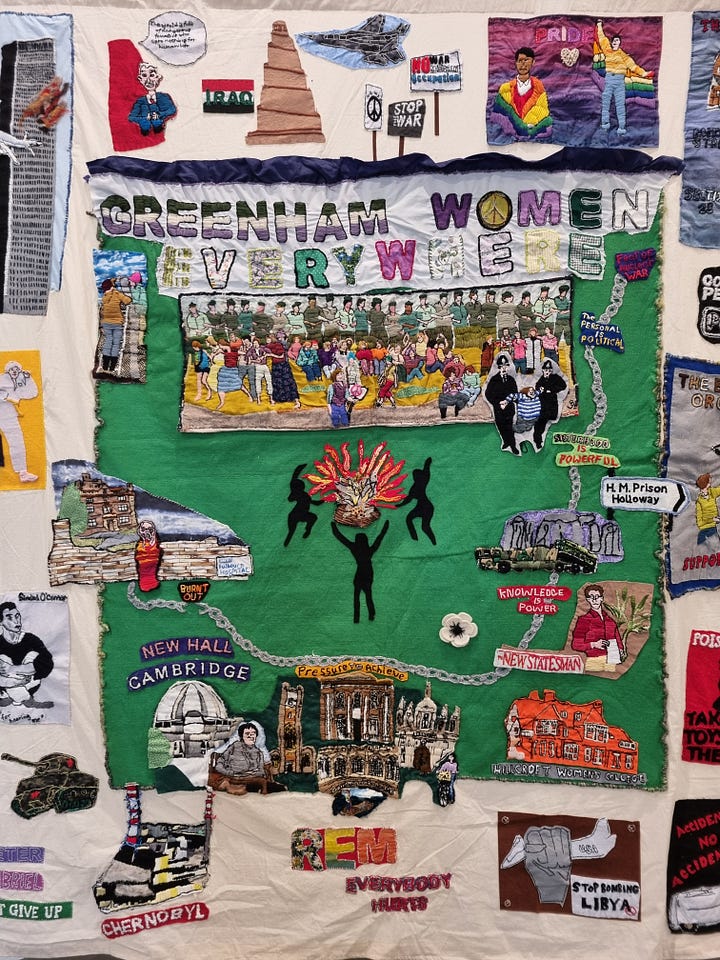

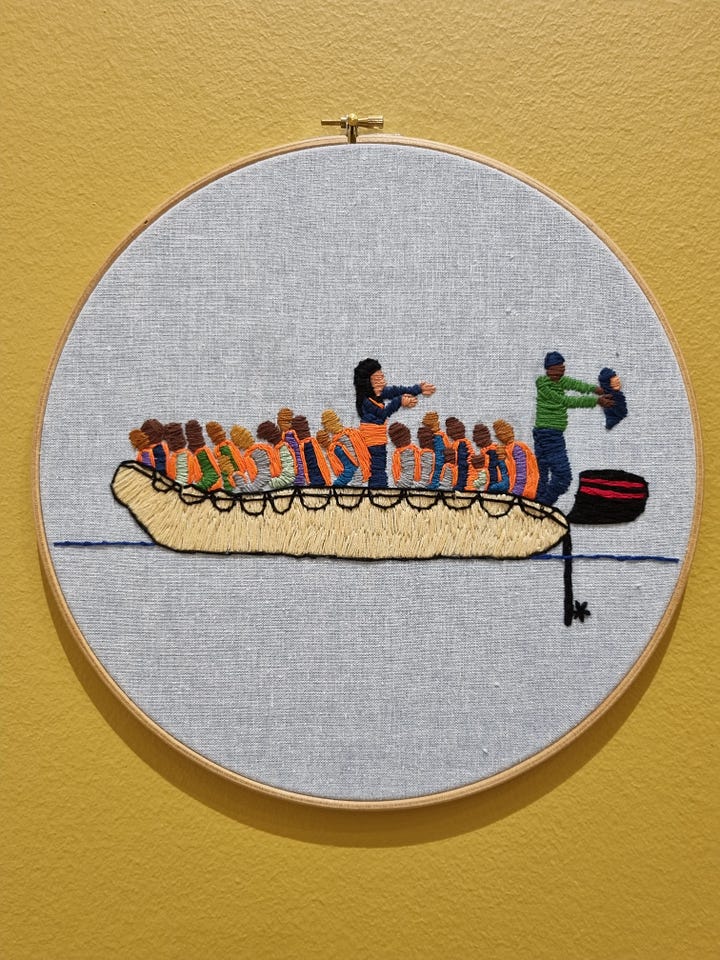
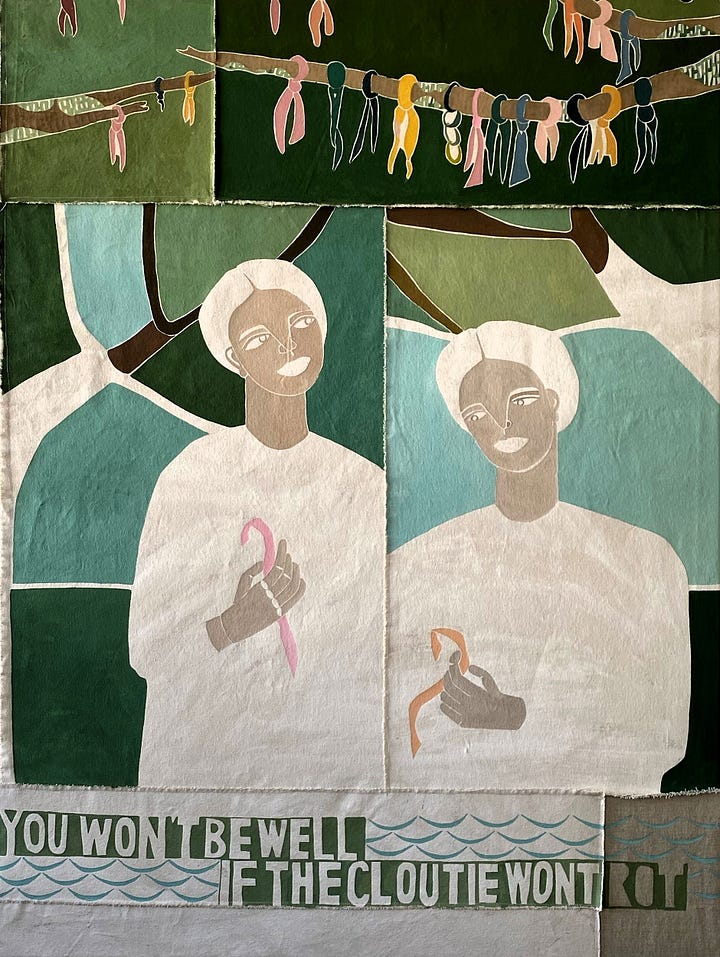
Part of the course in Dartmoor involved a measure of crafting, something I don’t always have patience for. And indeed, for one item I found myself starting over and over again, getting very tied up in literal and emotional knots. Despite the challenges I found a sense of calm during the process, loving the concentration and attention to detail. Everyone in my group, sitting around the fire with their own projects to complete.
The Exchange in Penzance and The Newlyn Gallery are currently showing a remarkable exhibition of textile art called Social Fabric giving a fresh perspectives to traditional skills. As the Gallery says; At the heart of this exhibition is The Workroom. Inspired by the Newlyn Industrial Needlework Classes of the 1890s, it will actively seek to equip participants with the knowledge and skills to produce objects of utility, comfort, and warmth. An invitation to contribute to the social fabric quilt.
Should we? We should. We did. On the table is a pile of of fabric pieces. Beads, ribbon, offcuts, buttons, thread, needles, scissors and pins. Warned that the exhibition was closing, we rushed upstairs and then returned to the workroom until we were turfed out, after being told that we could take our work with us and return it when completed.
I sat down that evening and completed my patch, totally immersed in the details, astonished that memories of cross stitch, running stitch and chain stitch came back to me from Junior School. It was comforting, it was calming. It soothed my mind, slowed me down, stopped my brain from hurling content all over the place. Concentration on the needle and thread was everything.
One of the exhibits said it all. Excuse the terrible photo.
That’s exactly what I’ve found. I’m not the first or the only person to have rediscovered crafting, sewing and making things. Whilst I don’t know how long it will last before my mind turns around and moves on, it’s a calm meditation on the power of the needle and thread.
I returned home to find my wild garlic in bloom and my sourdough starter needing a feed. Flowerpots have been turned over by malignant squirrels no doubt rejoicing at the freedom my absence has given them to fling themselves all over my balcony. Hand sown seeds have begun to show themselves, somehow having avoided the squirrel curse. And I have my own hand sown patch landscape I couldn’t bear to part with. Sowing and sewing both seed fruit.
If you’ve enjoyed this journey and subscribing isn’t possible, do consider buying me a tea or coffee.
If you find some and think about growing it; please DON’T. It is an offence under Schedule 9 of the Wildlife and Countryside Act in England and Wales to plant or otherwise cause to grow this species in the wild.




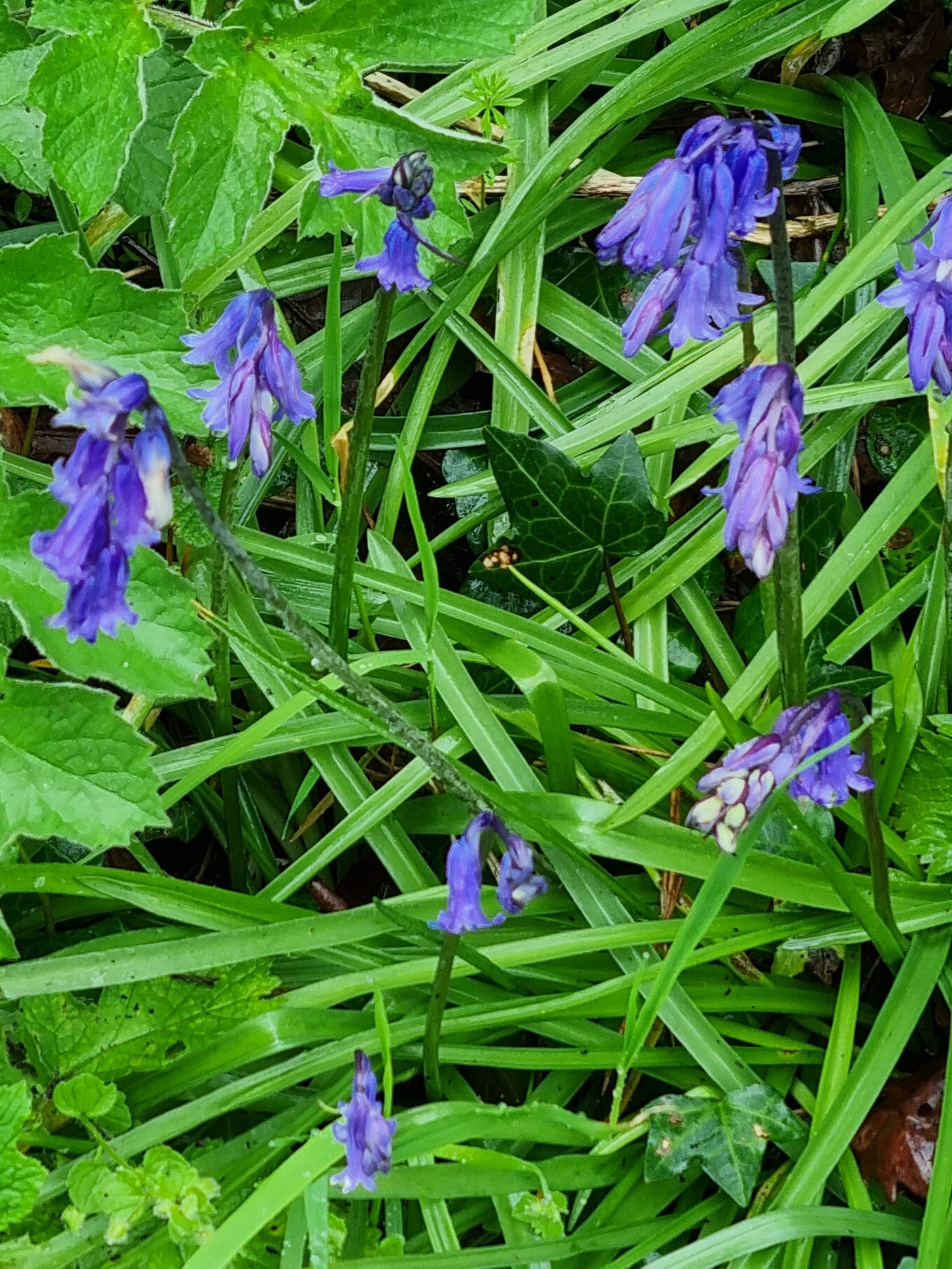
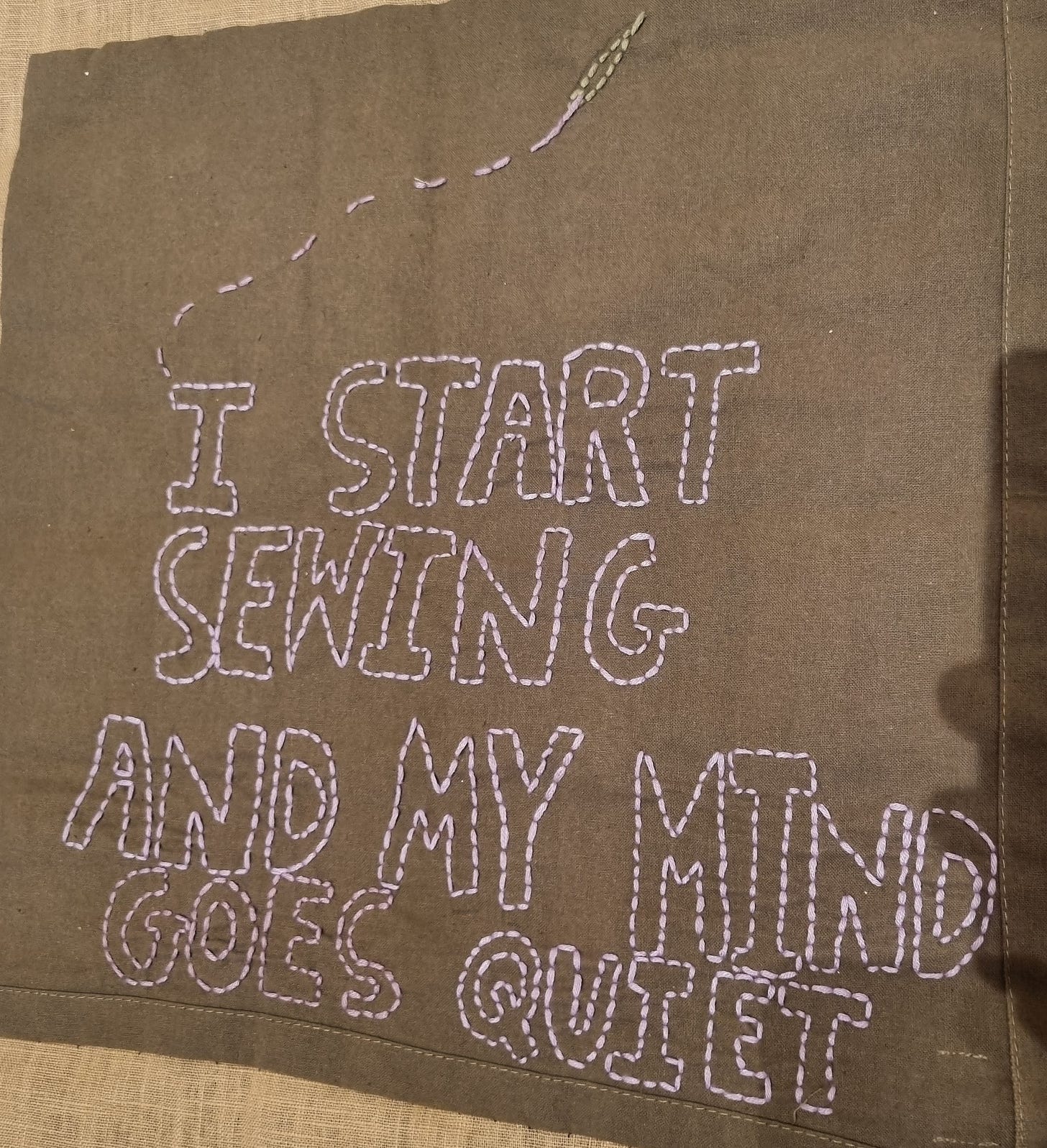
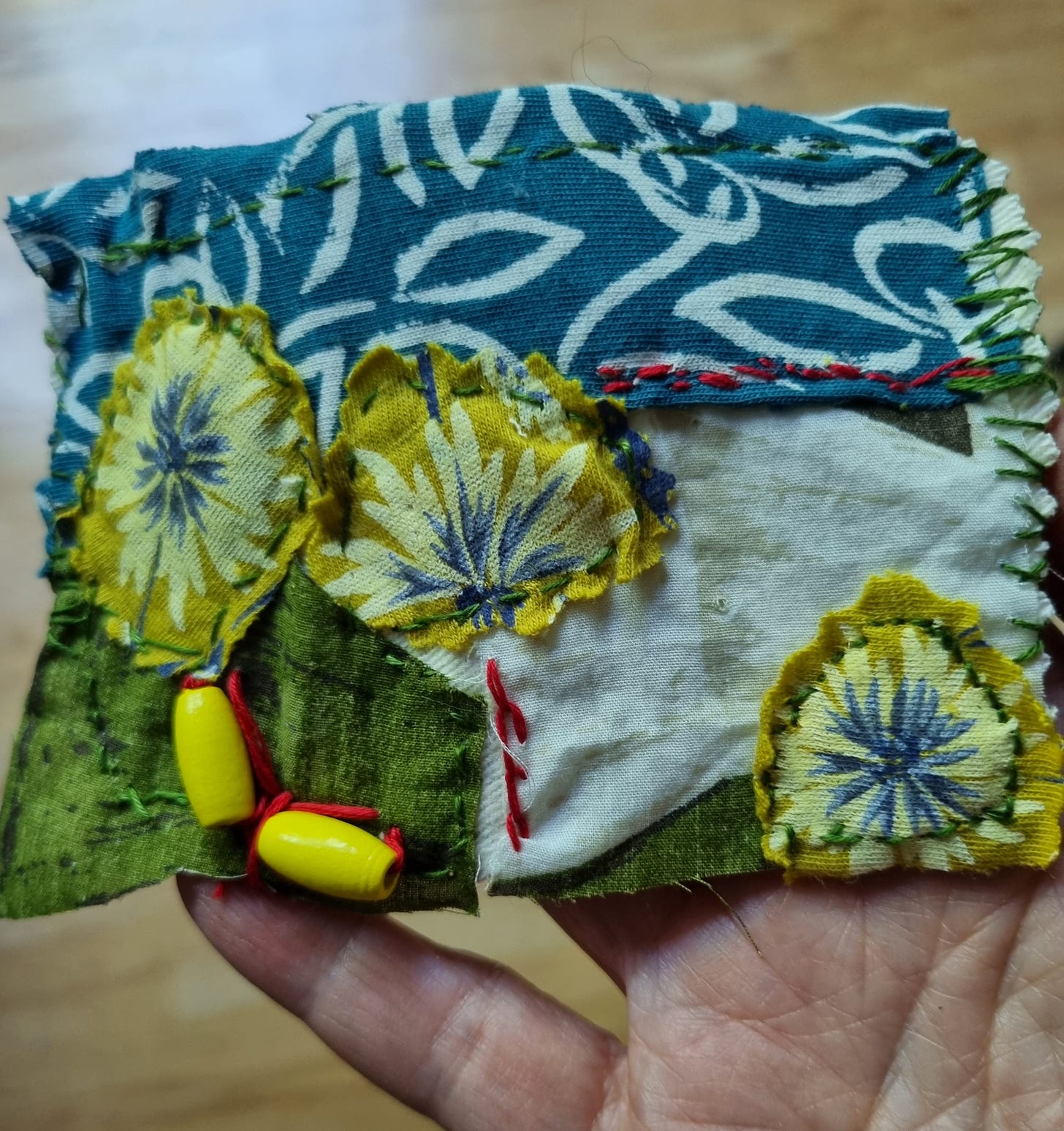
do you hunt wild game?
Salads to stews, funny.